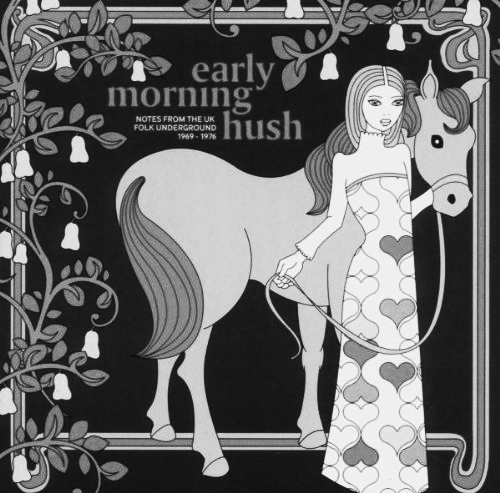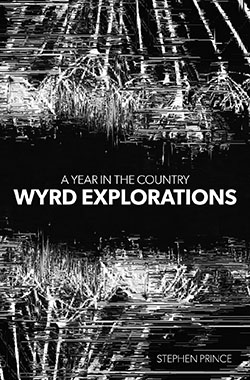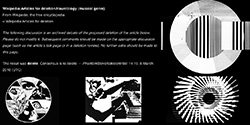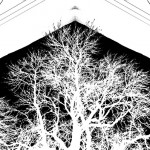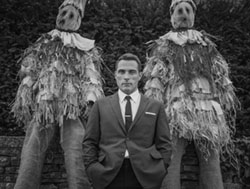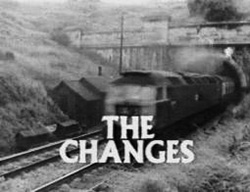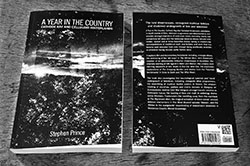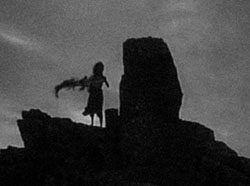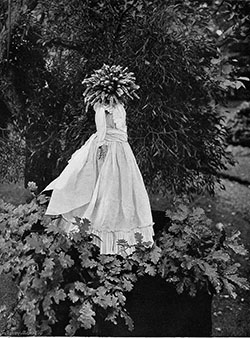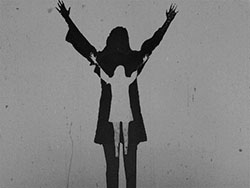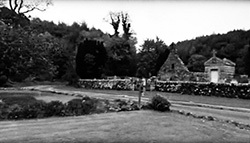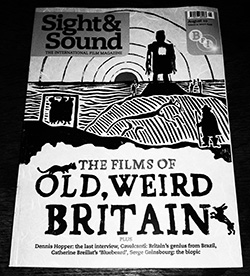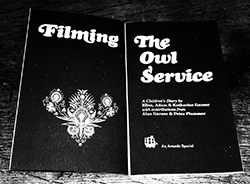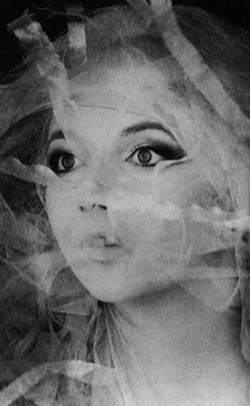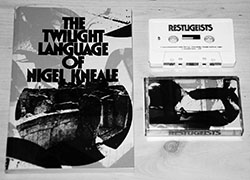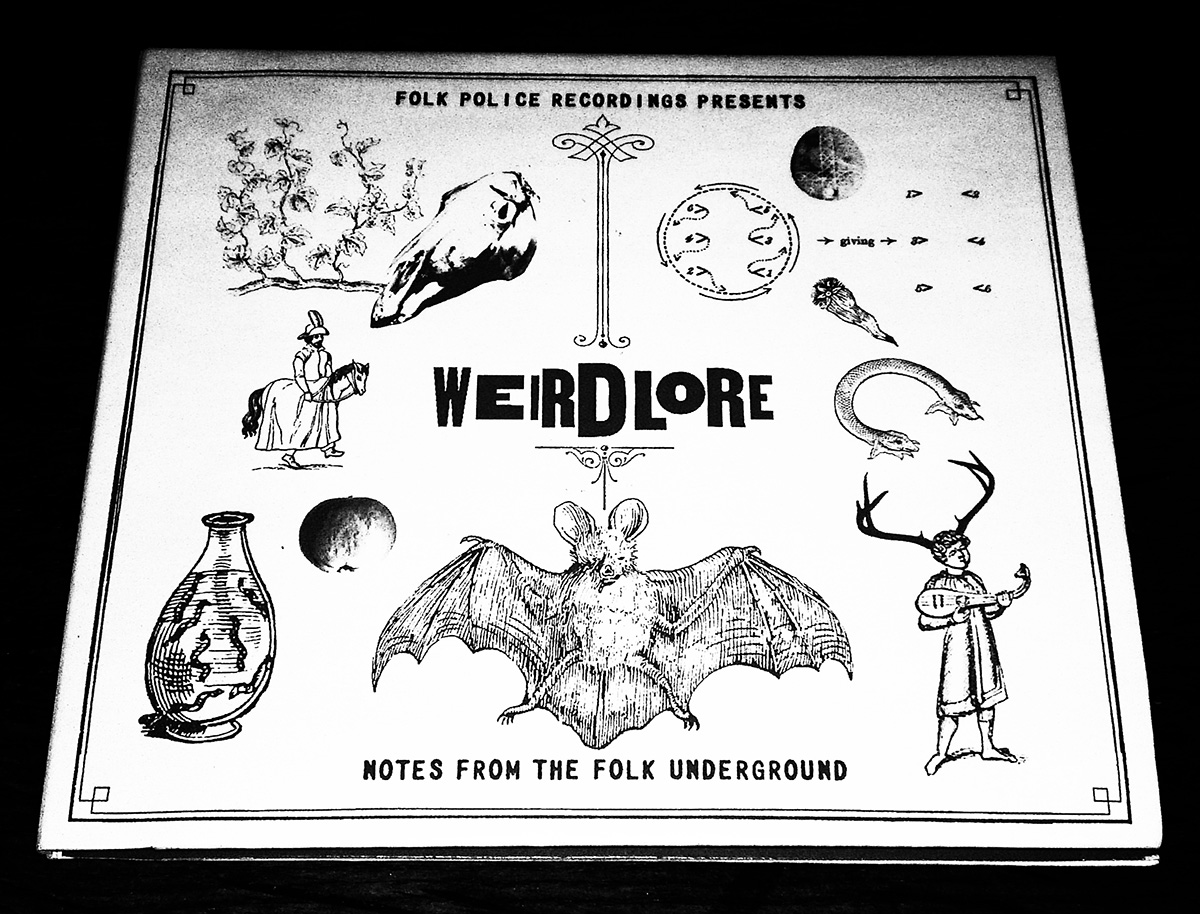
Once upon a time in 2012 there was an event called Weirdlore, which could well in future years have come to be known and referred to as a focal point for a new wave of what has variously been called acid, psych, underground or wyrd folk.
The phrase weirdlore was coined by Ian Anderson, formerly of fRoots magazine, who organised this event, as a name for the one-day gathering and also as a possible genre title for such things. Unfortunately, the event was cancelled as apparently there was a lot of enthusiasm for it but this did not translate into actual ticket sales. However, an accompanying compilation album also called Weirdlore was still released in 2012 by the at the time of writing no longer-operating Folk Police Recordings.
Folk Police Recordings was a Manchester-based record label which was active from 2010-2013 and was a home for work that took folk music as its starting point but which wandered off down its own paths (while still generally keeping an eye cast towards its roots).
To quote the label:
“We are purveyors of folk brut and other rough music. We like our folk skewed, raw and otherworldly. We’re basically traddies at heart but we also like stuff that can trace its ancestry back to the Incredible String Band and the first psych-folk explosion. We like a bit of folk rock too, but not when it’s cunningly disguised pub rock, and we even like some singer songwriters, especially if they’re a little deranged. And we are always on the lookout for the new Bert Jansch – all self-respecting labels should have this as one of their goals.”
In keeping with the above, it was a label that seemed to sidestep the more strict gate-keeping of tradition aspects of folk music and put out work that while it could be experimental, was also particularly listenable to and accessible. That is not always an easy fence to stay standing upon but they seemed to have a good ear for such things.
Their releases included work by amongst others Sproatly Smith, The Woodbine & Ivy Band, The Owl Service, Harp And A Monkey and Lisa Knapp as well as an album by Frugal Puritan which was alleged to have been a recording of lost Christian acid folk (please note the “allegedly” as this may well in fact have been a project created and imagined in contemporary times).
Folk Police Records could be seen to be one of a number of record labels and music orientated projects which to various degrees have worked in and released left-of-centre, exploratory folk and related work and/or work related to the flipsides and undercurrents of pastoralism and the land.
Along which lines are included amongst others Deserted Village, Was Ist Das?, Hood Faire, Patterned Air Recordings, Front & Follow, Caught By The River’s Rivertones, Stone Tape Records, Clay Pipe Music, The Geography Trip, Folklore Tapes, Rif Mountain and A Year In The Country itself.
The Weirdlore album is, as was the intended event, a snapshot of things musically weirdloric (or wyrdloric) and includes tracks by performers whose work was released separately by Folk Police Recordings and others and included songs by Telling The Bees, Emily Portman, Rapunzel & Sedayne, Nancy Wallace, Pamela Wyn Shannon, Katie Rose, The False Beards, Foxpockets, Boxcar Aldous Huxley, The Straw Bear Band, Starless & Bible Black, Alasdair Roberts, Corncrow, Rosalind Brady, The Witches with Kate Denny, Harp And A Monkey and Wyrdstone.
Aside from the music the album is also well worth a peruse in part for the accompanying text by Ian Anderson, which was written with Weirdlore still a month away and not yet cancelled. In it he rather presciently describes the album as “celebrating a day which has yet to happen and a genre that quite conceivably doesn’t exist”.
A particular standout track is Sproatly Smith’s version of traditional folk song “Rosebud in June”, which was described by website The Gaping Silence as being:
“…like something from The Wicker Man, if The Wicker Man had been a 1960s children’s TV series about time travel.”
Which sums up the song and the atmosphere it creates rather well; otherworldly, transportive, dreamscape acid or psych folk.
 (Above a later edition of The Yew And The Hare self released by the band.)
(Above a later edition of The Yew And The Hare self released by the band.)
Sproatly Smith, who released their first album The Yew and the Hare in 2009, were described by fRoots magazine as “the mystery flagship band of the new wave of weirdlore” and in keeping with that sense of mystery, for a while back when there did not seem to be any photographs of them online.
On the Folk Police Recordings released Minstrel’s Grave album from 2012 by Sproatly Smith two songs in particular stand out: “Blackthorn Winter” which manages to be shimmeringly stark, dark and beautiful all at once and “The Blue Flame”, which while gentler conjures visions of a land rolling away just out of sight of the mind’s eye.
Another recording of Sproatly Smith’s which is something of a standout in amongst a back catalogue of stand out work is a split seven-inch single with fellow Folk Police Recordings released performers The Woodbine & Ivy Band on Static Caravan, released in 2012.
On this release they both covered the traditional and evocatively erotic and unblushing song “Gently Johnny” which was reinterpreted by Paul Giovanni for The Wicker Man’s soundtrack in 1973 and about which Static Caravan wrote:
“In his 1958 exploration of the more ribald aspects of English folksong, The Idiom of the People, James Reeves suggests that ‘Gently Johnny’ has its roots in medieval minstrelsy. However, it is better known as the slightly sinister song of seduction sung by the regulars in the Green Man pub in the cult British horror film The Wicker Man. The song has continued to exert an influence over musicians, but many of the recordings that have been made of it are a little reverent and bloodless – either too faithful to the film version or treating the song as a precious and fragile faux- pagan remnant, maybe these two versions will go some way to redress the balance.”
Sproatly Smith’s version has a lilting gentleness to it that does not belie its salaciousness, while The Woodbine & Ivy Band’s has a graceful delicateness that is all English Rose and soft wantonness with just a hint and twang of dustbowls across the sea here and there; both build visions of pastoral otherliness, taking the roots of folk and late 1960s and early 1970s acid or psych folk music and quietly wandering somewhere new.
Within Weirdlore’s album packaging there is an extended piece of writing by Jeanette Leech who is the author of the book Seasons They Change: The Story of Acid and Psychedelic Folk (2010), which to quote the back cover “tells the story of the birth, death, and resurrection of acid and psychedelic folk”. Which it does indeed do, dropping a trail of breadcrumbs largely chronologically through that particular story.
Seasons They Change was at the time of its publication one of only a small number of books that focused on such or interconnected areas, which included Rob Young’s Electric Eden (2011) and The Electric Muse: The Story of Folk into Rock (1975).
Seasons They Change draws connecting lines of history between everything from 1960s psychedelic folk to the 2000s arrival of freak folk such as Devendra Banhart and Joanna Newsom via the apocalyptic underground folk of Current 93, contemporary wyrd folk such as Sproatly Smith and older privately pressed folk music.
Today when it can be a relatively easy task to record and put music out into the world via home recording, digital distribution and sites such as Bandcamp and Soundcloud it is almost hard to imagine the dedication and commitment that was once required to do such things.
Without the support of a record company, the money, expertise and access to equipment needed to record and press vinyl records in the 1960s and 1970s proved a heavy-handed filtering system.
However, some records made it through that system and a handful of the privately-pressed (i.e., without the support of a record label) results in the area of acid or psych folk have become rarefied, treasured artifacts, totems and tokens of semi-hidden and once almost lost culture, a selection of which are mentioned below.
Some of those featured in Seasons They Change appear on the compilation Early Morning Hush: Notes from the Folk Underground 1969-76, released in 2006 and compiled by musician and writer Bob Stanley, which included privately pressed folk amongst its tracks.
Along with its companion album Gather in the Mushrooms: The British Acid Folk Underground 1968-1974 from 20044 it presented folk music that was a far stranger set of concoctions than anything that springs to mind under the label of folk before, which is a description that could well be applied to much of privately pressed folk from the later 1960s and 1970s.
The Early Morning Hush album features songs that were originally released via private pressing by Stone Angel on their eponymous album from 1975 and Shide & Acorn from their 1971 album Under the Tree, of which just 99 copies were pressed. The album also includes a track by Midwinter (who later evolved into Stone Angel) that was part of a set of recordings from 1973 which were not released until 1994.
Other privately pressed folk from the time includes the eponymously titled Caedmon album from 1978 and the album A Midsummer’s Night Dream from 1971 by Oberon, which as with Under the Tree was originally pressed in an edition of just 99 copies.
Oberon’s version of the traditional song “Nottanum Town” opens the latter of these albums and can be filed alongside other privately pressed psych folk from that period such as Stone Angel and Midwinter, in the way that it features transportive female vocals and conjures and captures a very particular otherly spirit of Albion atmosphere that seemed to prevail around the time of its release.
There is a mixture of the lost and found, the strange and familiar to such music which is possibly a result of it springing from earlier traditional music while progressing and exploring elsewhere.
When writer, artist and graphic designer John Coulthart was discussing at his Feuilleton website the A Year In The Country-released themed compilation album The Forest/The Wald from 2016, which in part contained music that could be seen as a continuum of the experimentations of the acid or psych folk found on such private pressings, he said that it is:
“…a response to British folk traditions that acknowledges the history without seeming beholden to it.”
Which could also be a way to describe both the likes of Midwinter and Shide & Acorn or the contemporary visitings and revisitings of traditional folksongs and acid or psych folk by Sproatly Smith (whose work is featured on The Forest/The Wald).
Similarly, to some of those privately pressed records, quite a number of Sproatly Smith’s records have been released by independent limited-edition CD-R based record label Reverb Worship; it can now be hard to find the CDs as the relatively short runs they are released in tend to sell out.
Although from different times, in spirit this could be seen as nearer to privately pressed records from years gone by than a more mainstream or conventional form of release.
 (Above: the cover art for The Hare and The Moon’s eponymous first album, released on CD in several editions by record label Reverb Worship and digitally by the band.)
(Above: the cover art for The Hare and The Moon’s eponymous first album, released on CD in several editions by record label Reverb Worship and digitally by the band.)
In turn, while, as mentioned above, Ian Anderson called Sproatly Smith “the… flagship band of the new wave of weirdlore”, for myself they formed part of a trio of “flagships of the new wave of wyrd folk” that began releasing music around approximately 2008-2009 and that also included The Rowan Amber Mill and The Hare And The Moon.
The Hare And The Moon – which is one of the names under which Grey Malkin has created, collaborated and released music – released their eponymous first album in 2009 which undertakes a “fiend beneath the furrows” journey through the undercurrents of folk that is both beautifully entrancing and quietly and darkly unsettling. It is an album of haunting gothic or spectral folk by the way of the “hidden reverse” subterranean undercurrents of culture of the likes of Coil which whenever I listen to it always seems to conjure up an alternative personal time line where it was a fortuitous find back when on the 4AD label that had been filed next to the likes of the neoclassical otherworldly darkwave band Dead Can Dance in one of my favourite local independent record shops.
The Rowan Amber Mill began releasing music around 2008 and is one of the various band names, projects etc under which Stephen Stannard has released music, both as a solo artist and collaboratively.
A number of the albums etc Stephen Stannard has created, collaborated on and/or released have been themed concept albums. These include, amongst others, the imaginary soundtrack album and project The Book of the Lost (2013) and also the 2019 Rowan : Morrison album In the Sunshine We Rode the Horses, which was a collaboration between him and Angeline Morrison.
This narrative of this latter album intertwines hauntological and wyrd television related themes and tropes:
“[The album] takes a snapshot of an imagined history of the land. It explores the conflict taking place at the same area (The Ridgeway) through time periods between the land and man with their developing technologies. These events take place throughout time, from pre-history through to the near future. In a very 1970s Play for Today sort of way, they start to bleed into each other as over time, the earth begins to enter a period of hibernation to heal itself from the destruction wrought upon it.” (Quoted from text which accompanied the album’s release.)
It is a rather lovely album of acid or psych folk which while not being purely a retro retreading brings to mind a sense of being a recently unearthed, privately-pressed folk album from some undefined point, possibly in the very late 1960s, or the 1970s, which might be filed alongside the likes of the above-mentioned privately pressed 1971 folk albums Shide & Acorn’s Under The Tree and Oberon’s A Midsummer’s Night Dream, or from which tracks might eventually turn up on compilation albums such as, Early Morning Hush: Notes From the Folk Underground 1969-76 (2006). Indeed, to quote from a review of In the Sunshine We Rode the Horses on the Terrascope website:
“This is a beautifully packaged yet somehow understated album destined, it seems, for ‘lost classic’ status, to be rediscovered and cherished by generations of pilgrims on the old straight track. Somehow, we think they would approve.”
All three of these bands and/or their various founders, intertwinings, offshoots and outgrowths continue to wander down the “old straight tracks” and otherly furrows of wyrd folk, sometimes crossing paths and collaborating with one another, and between them they have created an extensive and impressive back catalogue which has explored and reinvigorated the lysergic fields and lineage of acid folk.






